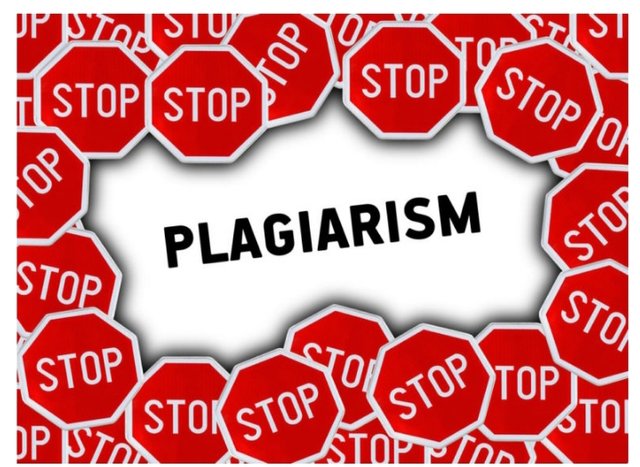Preamble:
"It is better to fail in originality than to succeed in imitation" -Herman Melville
source
Hello fellow steemians, having completed my achievements one and two, I now proceed with enthusiasm to Content Etiquette, which is the third of the six in the newcommers series.
First: Definition/ contextual clarification.
Reading through many texts and authors, I discovered a near general agreement on the definition of plagiarism, only semantic disparities and sometimes, contextual consideration.
To summarize the definitions, plagiarism entails, one presenting someone else's work, or ideas as your own without their consent.
Within the academic and intellectual premises, plagiarism is seen as an act of academic dishonesty and limitation, a violation of journalistic ethics and, a serious crime in the publication industry. It's also punishable by copyright law, to the extent of payment of fines and or Jail terms.
Types of plagiarism: within this context, the types of plagiarism have been condensed into the following four popular types.
1. Direct plagiarism
2. Mosaic plagiarism
3. Self plagiarism
4. Accidental plagiarism
Direct plagiarism; this type is also referred to as, control c, ie copy and paste. It means a verbatim presentation of another author's work without making due and adequate reference to them.
Mosaic plagiarism; this is committed when one's work contains phrases or contents that retain the original meaning of the author and the lifter failed to make proper reference. This is the most curny and frequently violated.
Self plagiarism; this type occurs when someone is reluctant to make new discovery and resort to lifting his older works and ideas, presenting them in a new work. This type, even when indicated, is still frowned at, as it is an unreasonable repetition.
Accidental plagiarism; this happens when a work or production carry misquoted sources and or, improper documentation of sites.
The pictorial indication above speaks eloquently on the consequences of plagiarism, they include but not limited to the following;
1. Reputation problem; it whittles the academic and intellectual reputation of anyone involved in it.
2. Monetary and material consequence; plagiarism deprives authors and producers their rewards for research and hard work.
3. Punishable by law; the international copyright law can be employed and enforced, this may lead to the offender paying huge sums or going to jail.
4. Failure in the assessment; the presenter of a plagiarized work will definitely be assessed low and rated as as an imitator.
In addition to the messures depicted above, I like to highlight the few below;
✓ Never oversight any source you consulted.
✓ Just give credit to whom it's do.
✓ Let your work pass through plagiarism check.
✓ Paraphrase and reference your older works imported into the new one.
Conclusion
I really took my time to read and understand the Content Etiquette in the steemit community. I have also resolved to embrace them and let them be my guard on steemit activities.
Thanks for your time.



Buen post!
Downvoting a post can decrease pending rewards and make it less visible. Common reasons:
Submit
Thanks so much
Downvoting a post can decrease pending rewards and make it less visible. Common reasons:
Submit